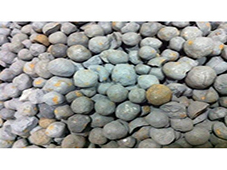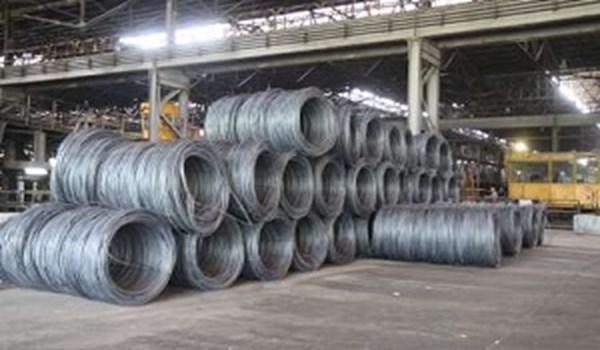
Iran Posts 11.6% Rise in Steel Output in Q1

Iran produced some 7.2 million tons of steel products in the first four months of the current Iranian year (started on March 21) which shows an 11.6% growth compared to figures from the same period last year, Ministry of Industry, Mine and Trade said on Monday.
The ministry announced today that Iran’s output was around 6.45 million tons in the four-month period last year.
In the first 7 months of this year, Iran has produced some 14.988 million tons of unprocessed steel which suggests a 6.4 percent growth compared to figures from the same period last year (14.091 million tons), the Ministry said in the statement.
Iran has produced some 2.2 million tons of unprocessed steel in July 2019 which shows an 11.1 percent growth compared to figures from the same month last year (1.981 million tons), it said.
Earlier this month, data published by Iran’s Association of Steel Producers showed that total steel imports into the country had decreased to 95,000 tons between late March and late June this year, down from 293,000 tons in the similar period in 2018.
The data covered in the report showed that raw steel imports declined nearly 83 percent to stand at 1,000 tons this June, while imports of long steel products like bars and rods were down 37 percent at 27,000 tons.
The report said Iran’s imports of steel sheets and plates hit the lowest levels in years in the second quarter this year to stand at 68,000 tons, down 276 percent compared to 256,000 tons of imports recorded last year. It added that imports of steel ingots, including billets and blooms, also decreased by 80 percent in the same period.
However, data showed that lower steel imports came at the expense of increased production and exports for Iran.
The report said that raw steel production in Iran in the first three months of the current Iranian calendar year, which began in March, rose five percent to reach 6,638,000 tons.
The data showed that raw steel exports, including ingots, surged in the second quarter of 2019 to hit 2,183,000 tons, an increase of 20 percent compared to the similar quarter last year.
The change in trade balance in Iran’s steel sector comes three months after the US government imposed sanctions on the country’s metals sector.
Announcing the sanctions in May, the White House said that Iran’s revenue from the export of industrial metals, including steel, accounted for 10 percent of its export economy.
In mid-June, a senior Iranian lawmaker stressed that despite Washington's hype about its bans and pressures on Iran's steel industry, the country is still exporting the strategic product rendering the US sanctions obsolete.
"The steel sanctions against Iran are not something new and they had been imposed against the Iranian companies in the past too," Hamidreza Fouladgar told FNA on June 16.
He noted that companies have gained experiences to confront sanctions during years, and said that they have found some successful methods to this end.
"Despite all attempts the Americans have made to cripple Iran's exports, there is a target market that has not been affected by the sanctions much," Fouladgar said.
Iranian companies are strenuously increasing steel production despite threats and sanctions.
A senior official said in April that Iran's Mobarakeh Steel Company could produce over 500,000 tons of hot-rolled steel in one month.
"The workers of the hot-rolled steel unit could produce 500,282 tons of products in the month of Farvardin (March 21-April 20) and set a quality record for Mobarakeh Steel Company," The head of the hot-rolled steel unit of the company Mehdi Ali Akbarian said.
He added that 116,054 tons of low-thickness and high-quality steel and 65,051 tons of sponge iron were respectively produced in Saba Steel Complex and Sefid Dasht Steel Company.
Iran announced in March that steel production in the 11 months between March 2018 and February 2019 had witnessed an 8% growth compared with the corresponding period in the last year, outputting 19.604 million tons of crude steel in the span.
Iranian Steel Producers Association released a report recounting that the production of semis also observed a 13% growth during the past 11 months of the current local calendar year (through February 19).
Billet and bloom output stood at 12.958 million tons, while that of slab reached 9.738 million tons.
Hot-rolled coil had the lion’s share of finished steel production with 7.277 million tons, up 3% year-on-year.
It was followed by rebar with 7.102 million tons, up 24% in comparison with last year’s 11-month period.
Production of cold-rolled coil stood at 2.34 million tons, up 14%, while the production of coated coil with 1.272 million tons observed a 9% fall.



Trump weighs using $2 billion in CHIPS Act funding for critical minerals

Codelco cuts 2025 copper forecast after El Teniente mine collapse

Electra converts debt, launches $30M raise to jumpstart stalled cobalt refinery

Barrick’s Reko Diq in line for $410M ADB backing

Abcourt readies Sleeping Giant mill to pour first gold since 2014

Nevada army depot to serve as base for first US strategic minerals stockpile

SQM boosts lithium supply plans as prices flick higher

Viridis unveils 200Mt initial reserve for Brazil rare earth project

Tailings could meet much of US critical mineral demand – study

Kyrgyzstan kicks off underground gold mining at Kumtor

Kyrgyzstan kicks off underground gold mining at Kumtor

KoBold Metals granted lithium exploration rights in Congo

Freeport Indonesia to wrap up Gresik plant repairs by early September

Energy Fuels soars on Vulcan Elements partnership

Northern Dynasty sticks to proposal in battle to lift Pebble mine veto

Giustra-backed mining firm teams up with informal miners in Colombia

Critical Metals signs agreement to supply rare earth to US government-funded facility

China extends rare earth controls to imported material

Galan Lithium proceeds with $13M financing for Argentina project

Kyrgyzstan kicks off underground gold mining at Kumtor

Freeport Indonesia to wrap up Gresik plant repairs by early September

Energy Fuels soars on Vulcan Elements partnership

Northern Dynasty sticks to proposal in battle to lift Pebble mine veto

Giustra-backed mining firm teams up with informal miners in Colombia

Critical Metals signs agreement to supply rare earth to US government-funded facility

China extends rare earth controls to imported material

Galan Lithium proceeds with $13M financing for Argentina project

Silver price touches $39 as market weighs rate cut outlook

















